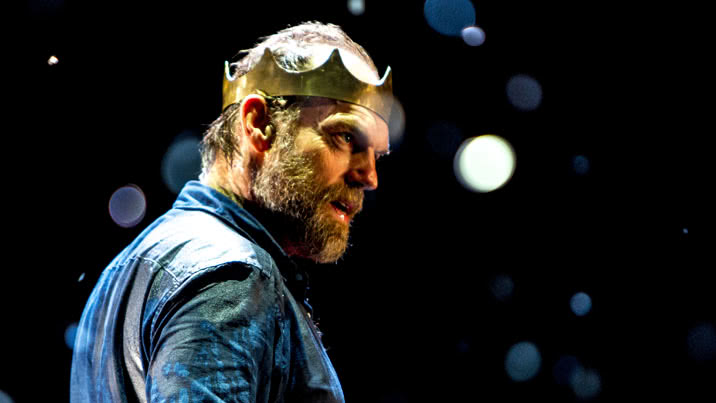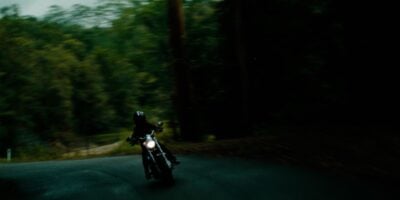The Sydney Theatre Company’s new production of Macbeth, starring Hugo Weaving, comes burdened with the hype of its own conceit, which is to turn the Sydney Theatre inside out like a banana peel.
The audience gazes out at empty seats while squeezed into scaffold seating at the back of the stage, underneath all the lights and pulleys, while the cast members have stormed the bleachers and stand with their backs to the empty auditorium. They wear civvies, and the only set to speak of is a long table around which the players prowl. This is Macbeth unadorned.
Weaving has the voice of the salaried Shakespearean actor, but his line readings are those of the ex-stutterer. “Life’s but a walking shadow” becomes “Life’s. But. A Walking. Shadow”, with each word erupting as though forced out with great effort. The other actors play up to three roles each, and it can be problematic. We see four actors slaughter Banquo, then, in the next scene, the same four actors sit down to feast with Macbeth. Banquo’s ghost appears and Macbeth turns to water, and his guests – the same actors we just saw do the deed – begin to suspect Macbeth of Banquo’s murder. This is a condensed version of the play, a scant two hours, but scenes like this sacrifice clarity at the altar of thrift.
At play’s end, Macbeth lies dead on the floor, the other actors depart stage right, then Weaving gets up and walks off. Then the lights go out, and he and the other actors return to take their bows. Why not have the lights go down on Weaving’s prone body? Like the stage switcheroo, director Kip Williams seems to want to pin his audience to their seats by sheer force of artificiality. The empty theatre certainly has a stark, interrogatory power. But its use here feels like a case of cart before horse: a sexy concept hatched by a director before he worked out which text to unleash it on, and why.
2/5 stars
Macbeth is playing at Sydney Theatre Company until Saturday September 27.



































